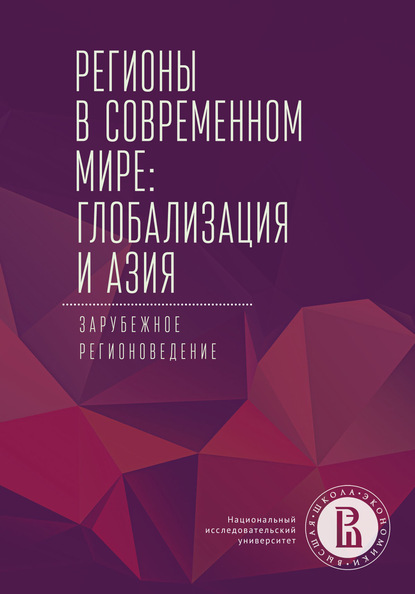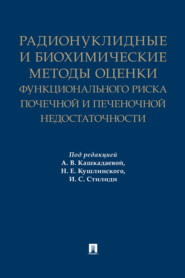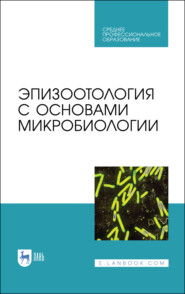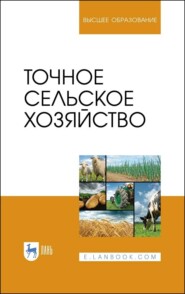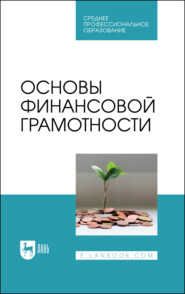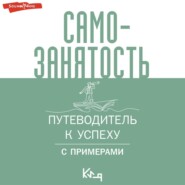По всем вопросам обращайтесь на: info@litportal.ru
(©) 2003-2024.
✖
Регионы в современном мире: глобализация и Азия. Зарубежное регионоведение
Автор
Год написания книги
2020
Настройки чтения
Размер шрифта
Высота строк
Поля
OBOR is a vision launched by President Xi that seeks to integrate China with the Eurasian landmass through an immense network of transport corridors, energy pipelines and telecom infrastructures. The geographic span of OBOR is fairly large, covering around 65 countries, 4.4 billion people and 30 per cent of global GDP[22 - China Belt and Road Initiative Measuring the impact of improving transportation connectivity on trade in the region. URL: https://www.rand.org/content/dam/rand/pubs/ research_reports/RR2600/RR2625/RAND_RR2625.pdf (date of access: 02.12.2019).]. Although the initiative is called One Belt, One Road, which has created an impression that it is just one corridor, rather the two main routes actually have a series of sub-branches and various economic corridors like for instance, the China-Pakistan Economic Corridor (CPEC), or the China-Central Asia-West Asia Economic Corridor (CCWAEC). Therefore in 2015 China tried to change the name to Belt and Road Initiatives (BRI). However, still it is popularly known as OBOR.
OBOR is China’s long-term development strategy. However, in the short term, it is a means to offset higher domestic production cost and excess capacity, reduce transport cost, create new markets for Chinese goods and services, and internationalize the Chinese currency RMB. Whereas, in the long term, China requires to ensure it has timely, efficient, and secure access to markets and resources as in the present it is the worlds’ largest trading nation. Chinas presence in the Middle East is of great importance as it links the three continents of Asia, Africa and Europe.
Main Results
The main finding of the study is summed by under the following subheadings: OBOR and Impact on the Middle East; what do countries get in return?
As President Xi Jinping has increased China’s effort to take a more active role internationally, the Middle East has become one of the major regions for staging the OBOR initiative. In July 2018 in a gathering of 21 Arab nations in Beijing, President Xi assured substantial loans and financial aid to support economic development in the region. During the meet the Chinese government also lucratively elevated their relationship to a “strategic partnership[23 - How China Is Winning Over the Middle East. URL: https://thediplomat.com/2018/07/how-china-is-winning-over-the-middle-east/ (date of access: 02.12.2019).].”
Effectively, China has planned to launch a mini Marshall Plan for the Middle East and North African region. The main objective of the China-Arab State Cooperation Forum (formed in 2004) is the economic development of the region. China sees economic development as a key to resolve various security and humanitarian problems in the region.
China and the Middle East have mutual interests and their economic relationship is now expanding beyond oil. Chinese companies are pursuing major infrastructure projects in the Middle East region as part of Belt and Road initiative. The Chinese organizations created to support the Belt and Road Initiative is readily providing financing for much-needed infrastructure. Like for instance in Egypt, the Chinese have declared to invest around $50 billion to help the development of the new administrative capital.
The demand of renewable energy, fintech, artificial intelligence, and electric cars are increasing in the Middle East; sectors where China is playing a leading role. Major portion of China’s financing will go toward supporting projects and sectors where China is a global leader, which is being welcomed by the Middle Eastern countries.
Apart from loans and financial aid for economic development, it was also announced at the Arab Summit for the creation of financial consortium. Wherein Arab and Chinese banks will establish a fund of around $3 billion to support “economic reconstruction” and “industrial revival.” The main objective of this group will be to promote cooperation in the fields of oil and gas, nuclear, and clean energy.
Considerably, President Xi has called upon the Arab countries to commence with negotiations for a free trade agreement between China and the Arab countries. Such negotiation is part of President Xi’s larger strategy of exerting its economic influence to negotiate “free trade” agreements with major regions around the globe.
What do countries get in return?
In lieu of cooperating in OBOR projects countries receive preferential financing including grants, interest-free and concessional loans, and other forms of government funding. They also receive a full development package to strengthen their economy. For instance, UAE, which is China’s second largest trading partner in the region that handles 60 per cent of China’s reexports to Europe and Africa with an estimated value of $70 billion each year. China has signed a $300 million deal to develop a manufacturing operation in the free trade zone of Khalifa Port, on the heels of China’s COSCO shipping winning rights ($738 million) to develop and operate a new container terminal for 35 years. While most shipping companies own/ operate terminals and ports on foreign terrain as shipping-centric operations, China differs in that they open new ports and invest in adjoining free trade/ special economic zone and other development initiatives as well so that host countries get the entire development package[24 - Next Up on China’s Maritime Silk Road: Abu Dhabi. URL: https://www.forbes.com/sites/wadeshepard/2017/08/02/next-up-abu-dhabi-chinas-maritime-silk-road-breaks-into-the-middle-east/#6022124b9bbe (date of access: 5.12.2019).].
China is an old ally of Iran and has vested interests, along with Russia, in Iran’s oil and gas industry. China is financing the upgrading of the Tehran-Mashhad railway along with China’s Exim Bank lending US$1.5 billion for the lines electrification. The track of 2,300 km line will eventually link Urumqi, the capital of China’s western Xinjiang Province, to the Iranian capital Tehran, connecting Kazakhstan, Kyrgyzstan, Uzbekistan and Turkmenistan along the way[25 - China’s Belt & Road Initiative In The Middle East. URL: https://www.silkroadbriefing.com/news/2019/06/21/chinas-belt-road-initiative-middle-east/ (date of access: 5.12.2019).].
The proposed railway project is supposed to run from Tehran and join Iran’s east-west network leading west to Turkey and Eastern Europe. It is also expected to open a way to Europe by a developing rail route from the southern Iranian ports to Azerbaijan and Europe. Further linking with the Iran’s North-South Transport Corridor, this runs from Chabahar Port north to Azerbaijan. Towards the east, this links up with the also Chinese funded, low key Lapis Lazuli Corridor.
The rail project will extend from Tehran into Turkey and across the borders with the European Union. Additionally, Turkey is also being linked with rail freight lines running north through China and across Kazakhstan, to Baku in Azerbaijan. The Baku-Tbilisi-Kars Railway provides a direct link to Europe from China, via Turkey as it connects through a cross-Turkey. A high-speed rail service is being constructed by China, connecting Kars with Edirne, near Turkey’s border with Bulgaria and Greece. Bilateral trade between Turkey and China was recorded at US$26.3 billion in 2017. Turkey’s export to China was around US$3 billion while its imports from China exceeded US$23 billion.
China has extensively invested in Syria for developmental purpose. According to Ellis, this is «an opportunistic and geopolitical play; opportunistic as Chinese contractors are looking at reconstruction projects to rebuild the country after its devastating civil war, and geo-political as China recognizes that Syria can provide an alternative route to Europe than the Suez Canal»[26 - China’s Belt & Road Initiative In The Middle East. URL: https://www.silkroadbriefing.com/news/2019/06/21/chinas-belt-road-initiative-middle-east/ (date of access: 5.12.2019).]. This region is being developed by the Chinese with a Special Economic Zone which is being built in Tripoli Port, and plans to rebuild the Tripoli-Homs Railway. The zone provides Chinese and other regional businesses with low tax options for consolidating and adding value to component parts sourced elsewhere to then be exported to Syria. As per the estimate of the United Nations, it will coast around US$250 billion to rebuild the region. As Syria is oil rich region, China can initiate with the infrastructure building and in return secure energy supplies. Meanwhile, develop a secondary route to the Mediterranean and southern Europe.
China is a big investor in Israel and has plenty of opportunity in the market, in the fields including real estate, transportation, energy, telecommunications, and other infrastructure requirements. Its ports and trade routes to the Middle East make it a major gateway to Europe for the Middle East, which is beneficial for China. Projects in Saudi Arabia, and the other Arabian states include gas pipelines, to meet Chinese demand and also a better consistent energy network across the region.
In 2018 President Xi visited Saudi Arabia, Egypt, and Iran[27 - Chinese president back home after visits to Saudi Arabia, Egypt, Iran. URL: http:// en.people.cn/n3/2016/0124/c90883-9008539.html (date of access: 10.12.2019).], and released its first Arab Policy Paper to signal its intention of increased engagement in the Mideast. The paper outlined the “1+2+3” cooperation framework[28 - China in the Post-Hegemonic Middle East: A Wary Dragon? URL: https://www.e-ir.info/2018/11/22/china-in-the-post-hegemonic-middle-east-a-wary-dragon/ (date of access: 9.12.2019).]. China is also trying to balance ties with Riyadh and Tehran, in March Beijing signed $65 billion worth of deals with Riyadh and aims to coordinate OBOR projects with Saudi Vision 2030, while in June China backed Iran’s admission to the China-led Shanghai Cooperation Organization (SCO) and recently extended a $10 billion credit line for infrastructure projects. Iran is an important node of the OBOR by virtue of its geography linking Central Asia with South and West Asia, while Saudi Arabia is a leader of the Gulf Cooperation Council (GCC) and also a key oil supplier[29 - The Belt and Road and China’s Long-term Visions in the Middle East. URL: http:// www.ispsw.com/wp-content/uploads/2017/10/512_Lin.pdf (date of access: 10.12.2019).]. With a planned Tripoli Special Economic Zone adjacent to the port, Tripoli could be a useful hub for Syria and enable China via the OBOR to play a constructive role in post-conflict reconstruction and stabilization efforts.
Conclusion
Hence, the study concludes that the ongoing regional security problems including terrorism, economic woes, and a need for immediate infrastructure, investment and trade, the OBOR initiative offers a quick economic aid. As China is becoming a more significant geopolitical actor in the Middle East, gradually the regional countries will become more dependent on Beijing for their trade and investment relations. China’s increasing economic soft power will in turn ease their dependency on the West and broaden their foreign policy options that may not always align with the United States and European Union interests. This would also reduce Western control over the region, additionally it increases regional countries’ freedom of action to diversify and engage with more economic partners. It would be beneficial if great powers including the Unites States, European Union, China, India, Russia and others also try to cooperate to jointly promote Middle East stability, security and prosperity.
References
Aneja A. China reaches out to West Asia, The Hindu, 23 March 2017. (in English)
Awasthi S. China-led BRI and its Impact on India with Specific Reference to CPEC // Journal of International Affairs, 2018, Vol 2 No 1. P. 97–110. (in English)
Ehteshami A. and Horesh N. China’s Presence in the Middle East: The Implications of the One Belt, One Road Initiative, 2019, Routledge. (in English)
Frans-Paul van der Putten et al eds. The Geopolitical Relevance of Piraeus and China’s New Silk Road for Southeast Europe and Turkey, Clingendael Report, 2016. P. 27. (in English)
Johny S. China’s long game in West Asia // The Hindu, 29 January 2016. (in English)
Lin C., The Belt and Road and China’s Long-term Visions in the Middle East, ISPSW Strategy Series: Focus on Defense and International Security, 2017. Vol. 512. P. 1–10. (in English)
Macaes B. Belt and Road: A Chinese World Order. Penguin Viking, 2019. 288 р. (in English)
Olimat M. China and the Middle East from Silk Road to Arab Spring, Routledge, 2015. 240 р. (in English)
Sevilla H. China’s New Silk Route Initiative: Political and Economic Implications for the Middle East and Southeast Asia, 2017, Asian Journal of Middle Eastern and Islamic Studies Volume 11, Issue 1. P. 83–106. (in English)
Shichor Y. Gains and Losses: Historical Lessons of China’s Middle East Policy for Its OBOR Initiative, Asian Journal of Middle Eastern and Islamic Studies, 2018, Vol. 12 Issue 2. P. 127–141. (in English)
Значение Китайского проекта «Один пояс – один путь» для российской экономики
ДАВЫДЕНКО ЕЛИЗАВЕТА ВАСИЛЬЕВНА
кандидат экономических наук, доцент кафедры международного предпринимательства Санкт-Петербургского государственного университета аэрокосмического приборостроения
davvas@mail.ru
Китайский масштабный проект «Один пояс, один путь», анонсированный в 2013 году, представляет значительный интерес для России. Учитывая санкции, введенные западными странами, и дальнейшее укрепление торгово-экономических и политических отношений со странами Азиатско-Тихоокеанского региона, Россия и Китай укрепляют сотрудничество в рамках данной инициативы. Особенно актуальным и острым в связи с расхождением целей и интересов китайской и российской сторон является вопрос сопряжения проекта «Один пояс, один путь» и Евразийского экономического союза. Как показывает шестилетнии? опыт реализации инициативы «Один пояс, один путь», реализация проекта идет не гладко и вызывает многочисленные нарекания в адрес Китая из-за навязывания интересов и условии? кабалы другим странам, коррупционной составляющей проекта и его непрозрачности. Таким образом, отношение к проекту неоднозначное, и в этих условиях важно выстраивать отношения между Россией и Китаем оптимальным образом для взаимовыгодного сотрудничества. Целью исследования является анализ влияния китайского проекта «Один пояс, один путь» на российскую экономику. Предметом исследования является китайский проект «Один пояс, один путь». Автор приходит к выводу, что в настоящее время российское участие в проекте «Один пояс, один путь» имеет в основном потенциальные преимущества и возможности, а реальные результаты для российской экономики весьма незначительны.
Ключевые слова: Китай, экономика, Евразийский экономический союз, «Один пояс, один путь», Россия.
THE IMPORTANCE OF THE CHINESE PROJECT “ONE BELT – ONE ROAD” FOR THE RUSSIAN ECONOMY
DAVYDENKO ELIZAVETA VASILEVNA
Associate Professor, The department of international entrepreneurship St. Petersburg State university of aerospace instrumentation
davvas@mail.ru
The Chinese large – scale project «One belt – one road» announced in 2013, is of significant interest to Russia. Taking into account the sanctions imposed by Western countries and the further strengthening of trade, economic and political relations with the countries of the Asia-Pacific region, Russia and China are strengthening cooperation within the framework of this initiative. Particularly relevant and acute due to the divergence of goals and interests of the Chinese and Russian sides is a question of interface of the project «One belt – one road» and the Eurasian Economic Union. As the six years’ experience of the «One belt – one road» initiative shows, the implementation of the «One belt – one road» project does not go smoothly and causes numerous criticism of China in imposing interests and conditions of bondage to other countries, the corruption component of the project and its opacity. Thus, the attitude to the project is ambiguous, and in these conditions, it is important to build relations between Russia and China in an optimal way for mutually beneficial cooperation. The aim of the study is to analyze the impact of the Chinese project «One belt – one road» on the Russian economy. The subject of the study is the Chinese project «One belt – one road». The author comes to the conclusion that at present the Russian participation in the project “One belt has mainly potential advantages and possibilities and real results for the Russian economy are very insignificant.
Keywords: China, economy, Eurasian Economic Union, «One belt – one road», Russia.
Introduction
The importance of studying the impact of the Chinese project «One belt – one road» on the Russian economy is beyond doubt. The Chinese project is an open initiative and any country can join it. The project has a huge multiplier effect and is very attractive not only for China, but also for other countries. One of the active participants of the concept of «One belt – one road» is Russia. Nowadays Russia and China are strengthening economic and political cooperation within the framework of this initiative. This article will analyze the impact of the Chinese mega project «One belt – one road» on the Russian economy, highlight its advantages and disadvantages.
Methodology
In the course of the study the author identifying the advantages and disadvantages of the influence of the Chinese project «One belt – one road» on the Russian economy, used a comparative method, analysis and synthesis. The research is based on the materials of Russian and foreign experts and scientists.
Main results
The Chinese project «One belt – one road», combining the «Silk Road Economic belt» and the «Maritime silk road of the XXI century», was first proposed by the President of China – Xi Jinping in 2013. This project is a key element of the general Chinese policy and is aimed at the strengthening China’s position in the international arena, solving China’s domestic economic problems and strengthening regional integration.
This project will lead to significant transformations in the Eurasian space, in particular in the transport and logistics sectors. The project involves the development of cooperation between the countries in five key areas: infrastructure cooperation, political coordination, the growth of mutual trade, strengthening of spiritual unity and free movement of capital[30 - China in the world and regional politics. The history and modernity. Issue XXII / ed. Safronov E. I. – Moscow: Institute of Far Eastern studies, 2017. – 400 p. URL: https:// publications.hse.ru/mirror/pubs/share/direct/211288436 (date of access: 18.12.2019).].





